Many people throw around the terms of filtered water and purified water, and many also use the terms interchangeably, but few know what they really mean or what their differences are. When it comes to purified vs. filtered water, filtered water is fairly easy to define while purified is a little more difficult.
That’s because it depends on how you’re referring to purified water. Here we’ll explore their differences and also talk about home filters that give you cleaner, tastier water.
It’s hard to determine a winner between purified vs. filtered water as it’s a matter of preference. Both clean your water while improving its taste. Filtered water is more affordable and better removes VOCs, but purified water better reduces odor, has far fewer solid impurities, and the ideal texture.
What is Filtered Water?
Let’s start easy before we get into the difficulty of defining purified water. Filtered water is exactly what it sounds like. This is water that has been filtered. The filter is placed there to remove impurities such as metals, sediment, VOCs, and even some viruses and bacteria.
Normally this filter is used on tap water, which has already been purified (again, more on this in the next section).
Depending on the filter, this usually makes the water tastier and it might even make it safer if it’s able to remove harmful compounds and metals. In short, filtered water uses a filter to remove contaminants and impurities.

What is Purified Water?
There are three ways to define purified water. It can be defined according to science, the Environmental Protection Agency (EPA), and as a process.
Each definition is different and also denotes different water quality levels. Just to ensure this doesn’t get too confusing, the term “purified water” usually applies to the process and it’s usually a higher quality than filtered water, as you’ll soon see.
As a scientific concept, purified water is only hydrogen and oxygen, or H2O. This implies that there are no other elements or impurities. While that sounds great, it’s virtually impossible since all water on our planet has interacted with other elements.
Obtaining scientifically purified water is expensive and very difficult, so it’s rarely available for consumption. Most filters and purification processes remove most impurities, but not quite all. Scientifically pure water means that everything is removed except hydrogen and oxygen.

The EPA defines purified water as water that has had harmful bacteria and viruses removed. This definition, as you might notice, makes no mention of chemicals, metals, or sediment.
That’s because it doesn’t apply to those impurities. This is basically tap water. While tap water for most is perfectly drinkable, it isn’t the best water and this definition is rarely used outside of water processing plants.
When most people talk about purified water, they talk about it as a process that goes beyond filtering, which is the third definition. This is also the definition that we will use for the rest of this article.
Purified water adds something extra to the filtration process. This is usually distillation, reverse osmosis, deionization, or a combination of these three.
While purified water can be defined in many different ways, it most commonly means a step above filtered water. It isn’t simply removing contaminants and making the water smell and taste better. It’s altering the water for a smoother, healthier experience.
Filtered Water Types and Methods
We’re not going to talk about every filtration method available, that would take too much time. Instead, we’ll be covering the most common types of home filtration methods.
The first and most basic is a sediment filter. While this can remove other impurities as well, it’s best at blocking sediment. This happens to be an affordable filter and comes in different qualities. You can often find these in 1-100 micron sizes. This denotes how large the holes are and what can pass through the filter.
The lower the number, the better it can filter water. For example, a 5 micron filter won’t allow particles larger than 5 microns to pass through. This also means the water takes longer to filter. This is best for sediment as it’s not that great against chemicals.
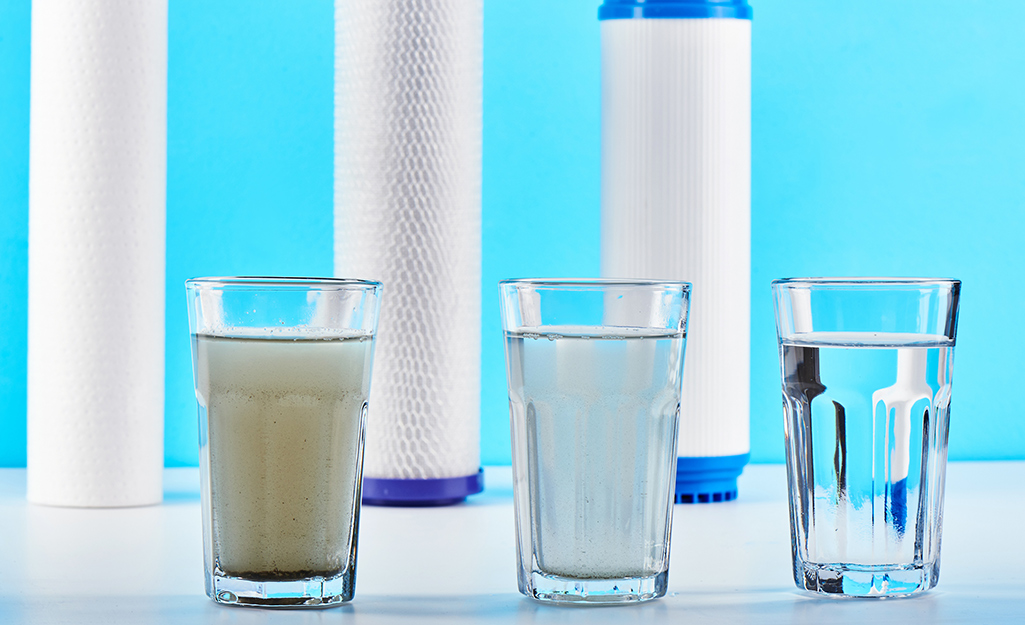
Activated carbon, also called activated charcoal, is a filtration block that uses carbon powder held in place by a binding agent. Carbon has a very high surface area that allows it to absorb sediment, chlorine, metals, chemicals, VOCs, and more. It’s also naturally resistant to bacterial growth.
Conversely, the filter does have a limited capacity. Once the carbon is packed with impurities, then it can no longer filter the water. This works best in tandem with a sediment filter because the sediment filter can absorb the larger particles and prolong the life of the activated carbon filter.
The third filter that we will highlight uses granular activated carbon. This is like an upgraded sediment filter, but with many of the activation carbon filter benefits. It also removes chlorine along with other chemicals and particles.
This filter uses larger carbon granules, so it’s best for absorbing larger particles and works well as a pre-filter. One major benefit is that the water flow is quite fast.
These are just three common filters. There are many others with similar properties. In general, they remove impurities while improving flavor and smell.
Purified Water Types and Methods
Purified water, as we explained, goes beyond filtered water by removing even small impurities and truly changing the water. Most purification systems also use a filter for its benefits, so keep that in mind, but we will discuss some common purification methods here so you can see what’s available.
Reserve osmosis is one of the most effective. This forces water to pass through a semipermeable membrane and removes impurities up to 0.0001 microns, which is far more effective than simple filtration.
Even bacteria and cysts can’t pass through this. This process is very slow and creates a fair amount of wastewater that must be cleaned out. But, the water you get is extremely pure.
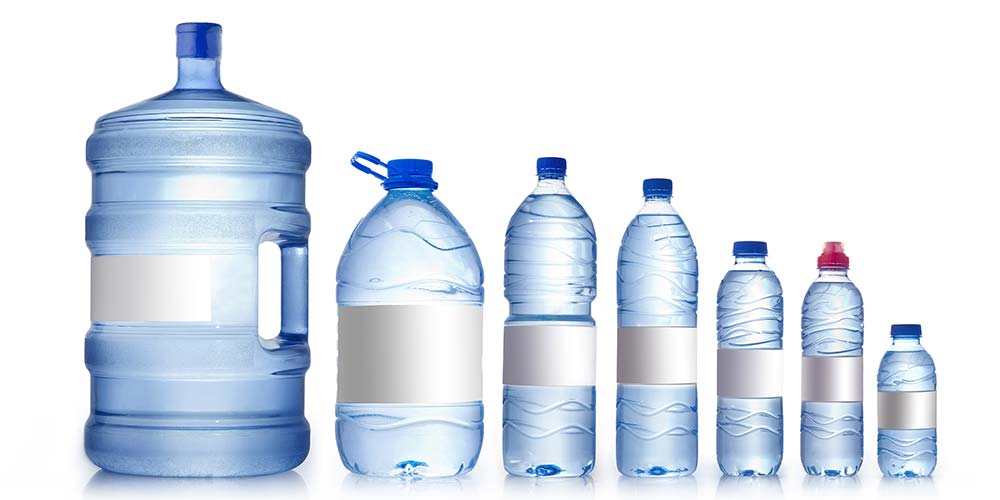
Distilled water technology has been around for a long time, but it’s expensive and slow. Despite this, some home purification systems are able to provide this.
This boils the water and then moves the resulting steam to another tank. The remaining water is mostly composed of sediment and other minerals that stay behind. The steam slowly cools into extremely pure water.
Lastly there is deionization, also called ion exchange. This has the water pass through a charged resin. As the water passes through, the resin captures charged particles and removes them from the water.
When the resin is at full capacity, it can be recharged using a solution. This is extremely effective and faster than other purification methods.
Purified vs. Filtered Water: Taste
This one is a toss up and a matter of opinion. In general, both are similar, but many people believe that filtered water tastes somewhat better. This is especially true if you’re drinking distilled water.
The distillation process is one of the most effective for removing impurities. However, this comes with the unintended side effect of making the water taste flat and sterile. This isn’t a problem with ion exchange or reverse osmosis though. Those still produce tasty water that is crisp and delicious.
It really comes down to the filtration or purification method, but both are tasty. It’s only distilled water that is significantly different.
While this is a toss up based on your own tastes and preferences, both taste significantly better than tap water.
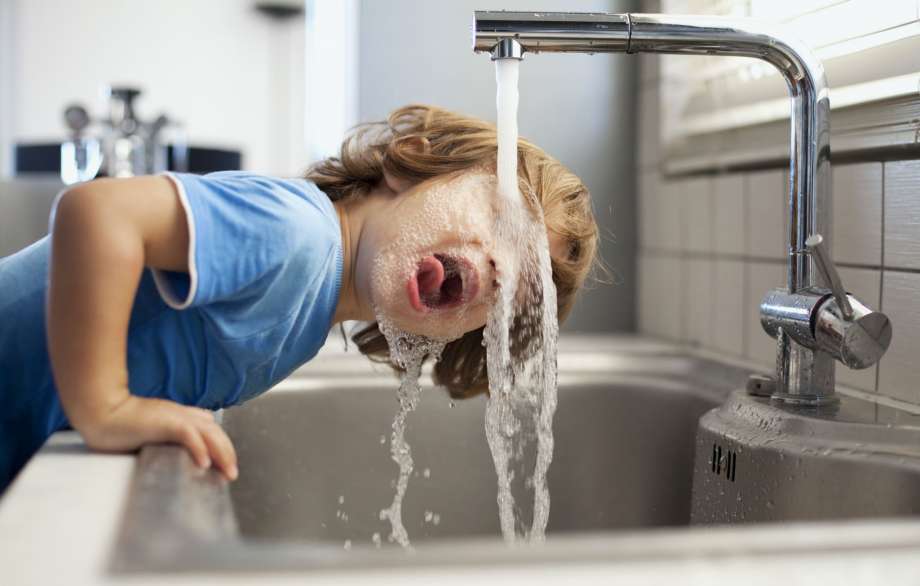
Purified vs. Filtered Water: Smell
Here’s another toss up because the difference often isn’t huge, but this leans more towards purified water. Tap water often has a smell to it. This is from chlorine, metals, and sediment leaving an unpleasant odor in the water.
The strength of the odor depends on your tap water and how good the water processing plant is. Sometimes it’s barely noticeable while in other communities it will have a strong smell.
In either case, both processes remove the compounds that lead to unpleasant odors. Both are quite effective in this regard and should leave you with clean smelling water. They’re also nearly equal.
Even the most basic filter can remove odors, but the purification process tends to remove more of these compounds.
Some people won’t notice the difference, but if your tap water smells strong, then you’ll want purified water as this will do a better job of cleaning your water. Most people will be fine with either.

Purified vs. Filtered Water: Texture
Water has texture. You may have never considered this, but I urge you to do a side-by-side comparison of tap water and filtered, bottled, or purified water and notice the difference on your tongue. The tap water will seem rough by comparison while the treated water is smoother, softer, and feels better in your mouth.
You’ll never look at water the same after trying this. This is mostly from removing the rougher impurities found in tap water, which softens the water.
Now knowing that, which provides the better texture? Both are excellent here and should create softer water. At the same time, the standout method here is deionized purified water.
This creates exceptionally soft water with a lovely texture that is unlike anything you’ve ever tried before. If texture is a priority for you, then make sure you get an ion exchange or deionizing kit for your system.
Outside of that, both filtered water and purified water are softer. Purified water wins this category, but most people will also love filtered water because it’s also much softer and more enjoyable than tap water.
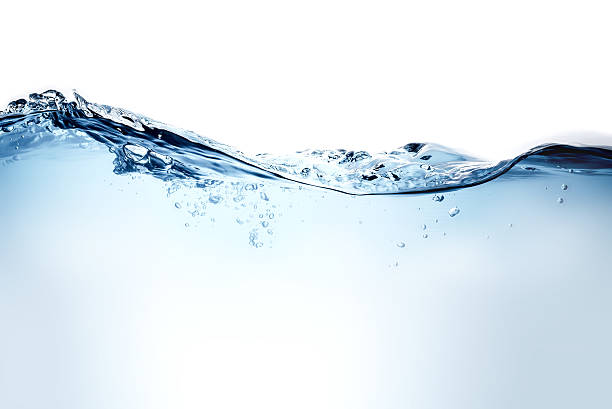
Purified vs. Filtered Water: Safety
As we’ve said countless times, filtration and purification systems remove harmful compounds, cysts, chemicals, metals, and more. So, which one does it better and makes your water safer? The truth is that they work best in tandem as they have varying levels of effectiveness with what they can remove.
Purified water is excellent at removing solid particles. While most filters can remove particles down to 1 micron or somewhat smaller, purification systems can remove even smaller particles with ease. Despite this, the surprising truth is that many VOCs and other harmful compounds escape the purifying process.
For example, with distillation, many VOCs boil at the same temperature as water, so they will also end up in the final product.

Filters, with their large surface area, are usually better suited at capturing VOCs and similar impurities before they get to your mouth.
Remember, both are effective at removing VOCs and solid impurities, it’s only a matter of which is best. If you’re talking about solid impurities, then purification is often best.
If you’re talking about VOCs, then filters are better. In reality, most home purification systems also use filters, so you should be getting the benefits of both simultaneously.
Purified vs. Filtered Water: Affordability
Before going into which is more affordable, consider the price of bottled water. Regardless of which system you want to get, both of these are more affordable than bottled water when you consider the price per gallon. Bottles seem cheap, but these systems give you equivalently tasty and clean water at a much lower price tag.
That being said, which is more affordable here? Filters tend to be more affordable than purification systems. Not only that, but purification systems often have several components that must be refilled or changed while filters only have one or two components.
At the same time, as we’ve discussed, purification systems tend to be more effective overall with cleaning your water and making it taste and smell better.
If price is your main priority, then you may want to consider getting a water filter.
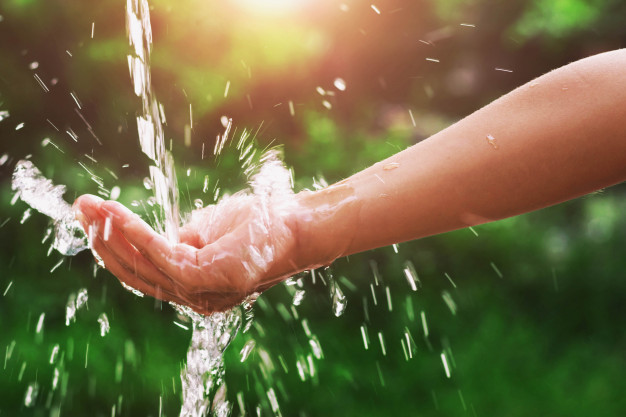
Conclusion
Who wins when it comes to purified vs. filtered water? It depends on your priorities. If you’re more concerned with cost and removing VOCs, then filters are somewhat better.
If you want water that smells the best, has the perfect texture, and is as clean as possible, then purification systems are often better. Both will make your water taste better, so it comes down to what you need from the system.

